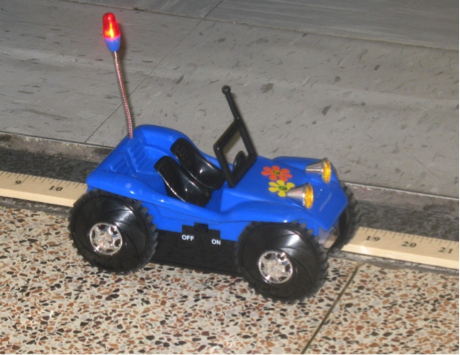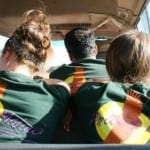 Over many years of teaching science myself and working with science teachers, I have come across many great teachers who guided their students to be successful learners and often inspired them to become scientists themselves. One thing has become clear to me – every one of these teachers developed their own pedagogy – their personal way of making their students science learners.
Over many years of teaching science myself and working with science teachers, I have come across many great teachers who guided their students to be successful learners and often inspired them to become scientists themselves. One thing has become clear to me – every one of these teachers developed their own pedagogy – their personal way of making their students science learners.
“Mr. Allen is a good teacher, but he doesn’t know much”
When I was a science consultant in the 1990s, I often visited John Allen, a Chemistry teacher at Riverdale High School. He was very effective at getting his students to learn successfully and enjoy Chemistry. He embraced cooperative learning, becoming popular in science classrooms at the time, and had his classes organized in structured learning groups for almost all of his classroom activities. When a student would approach him with a question, his first response was always to suggest they go back to their group and figure it out for themselves. He recounted to me that one day he was walking down the hall behind a couple of his students and overheard one say to the other, “Mr. Allen is a good teacher, but he doesn’t know much”! He smiled to himself, feeling confident in his belief that the teacher should be a facilitator and not the source of all knowledge and that students should play a major part in constructing their own knowledge and understanding.
The right amount of challenge and hands-on action
Sharon Lamb at Lindsay Place High School believed that real learning comes from building your own understanding from active classroom experimenting – and believed it was important for students to develop their own methods to conduct an experiment. She realized that this can be messy and time-consuming but that it is an effective way of ensuring deep understanding. I agree. I have always found that if students struggle with their understanding, and persist through it, they are more likely to really get it.
One activity I observed in her class was “the constant velocity car” “The company calls this a constant velocity vehicle”, said Sharon as she held up a small toy car for the class to see. “I want you to find out if this is honest advertising.” After questioning their understanding of speed of an object in motion and how to calculate it, Sharon pointed to a table with meter sticks, stop watches, masking tape and toy cars. She challenged them to figure out a way of not only measuring the speed of the car, but also finding out of the speed is constant over a certain distance. Soon, in groups of two or three, they were in the school hallway measuring set distances for their cars to travel and marking different lengths with masking tape. In hushed tones (most of the time) they discussed and argued with each other, conscious of not disturbing the other classes. “How can we get it to go straight?” “Will the battery hold up?” “How far should the car go?” “How do we calculate the speed?” “How do we make sure it’s constant?” were some of the questions overheard among the animated conversations going on.
Students measured distances, timed their trials and calculated speeds. They ran back and forth from group to group comparing their methods with the others and asked Sharon how to deal with obstacles as they arose. She encouraged them, but at the same time challenged their thinking. “That’s cool how you’re testing for speed using a 2-metre track. How are you going to record the time for the different distances?” she asked two girls. The mood of the groups varied from excitement to frustration to satisfaction and pride as they progressed through this activity. With Sharon’s guidance and a collective sharing of understanding among the students, they all came up with some form of conclusion about the honesty of the company’s claim.

The Constant Velocity Car – photo by K.Elliott
As a two-day Applied Science and Technology activity, Sharon used it to reinforce and give personal meaning to the calculation of constant velocity. She gave them control over the procedure, all the while keeping a close eye on them to nudge them in the right direction when frustration set in or when she saw them going in an unproductive direction. All students were thoroughly engrossed in it. It had just the right amount of challenge and hands-on action.
In my blog posts, for instance, this one, I have been making a case for inquiry-based science education as the most effective way for students to learn science and technology. Visiting different classrooms and talking to many teachers, however, it is clear that there are many ways to approach the teaching of science – and that the different approaches are the result of the many situations that teachers face on a day-to-day basis. Some of the factors that influence their pedagogy are
- demographics and special needs (who are the students?)
- curriculum requirements and number of concepts to tackle
- philosophical bent (I think students learn best when…)
- exam requirements (teachers want students to succeed)
- administrative considerations (scheduling, number of periods…)
- how teachers were taught themselves.
Mixing the research findings supporting inquiry-based pedagogy with the reality of today’s classrooms and a teacher’s own path through their professional learning – that is the challenge of science teachers everywhere.






I couldn’t agree more with this philosophy. As teachers we have to take a longer view of what education is really all about, and not a lot of it is involved with final exams. When I look back at teachers who inspired me, I usually remember their character and their passion about the subjects they taught.
I agree. The Quebec Education Program is based on a constructivist approach to Science and Technology, but it’s the teacher who has to figure out how to implement with his/her students.
Great post. Two quick thoughts coming out of the comments. This is “social constructivism” at its best. What is important is not only what they are learning here but how they are learning. Collaboratively. The second quick point is the one you made about sticking to what to were doing and making the necessary effort. This is what Carol Dweck and her work in growth mindset has demonstrated time and again. Focus and effort are integral to deep learning.
Keep them coming!
I like the idea that frustration (followed by pride) might be part of Learning and of fun doing it.
There’s that delicate balance between making the activity too easy or too difficult – between too boring and too frustrating. And that balance is different for each student!
Great Blog. It sounds so much like what our local U. calls experiential education. It’s by far the best way to learn. Even if you don’t learn so much, it’s not regurgital education which actually trains the mind to cram for a test so that you can forget it ten minutes later. Keep up the good work.
Another interesting and enlightening blog. Thanks, Ken.
I am fortunate to know both of these excellent teachers, but in two different contexts. I had graduated from Riverdale High School before John Allen arrived there as a young science teacher in the 1970s. I had heard great things about him over time, and then I came across an article that he wrote for the old PAPT Sentinel in the mid-1990s. The topic was Cooperative Learning in a Secondary IV classroom, and he detailed his experiences in the implementation and on-going use of the technique. Mr. Allen used exam results and anecdotal observation to point out that C. L. led to a great increase in his students’ results in ministry exams, a decrease in absenteeism, and a great sense of empathy that students demonstrated for each other. I was teaching Secondary IV History at Lindsay Place at the time, and I would use the article to show parents and students alike that C. L. is more than just “touchy-feely” togetherness, but is a technique that can lead students toward a higher level of academic achievement.
During the time that I was helping to organize the Riverdale High School 50th Anniversary Reunion, our committee was often asked by alumni, which former teachers were planning to attend, and Mr. Allen’s name was one at the top of the that list. That certainly stands as a legacy to the impact that a teacher can continue to have in the eyes of his or hers former students.
I was lucky enough to have taught across the hall from Sharon Lamb during the last 5 years of my teaching career. I can attest to the fact that she is an innovative, thoughtful and highly animated teacher. Her students enjoy the challenges that she presents to them and they appear to thrive in the highly active and inquiry-based environment that she has created. The approach to problem solving that she fosters can certainly lead to success in other subject areas, as it encourages students to take greater charge of their own learning. Both teachers on whom you have focussed developed very positive connections with their students, and I think that is because both respected students’ prior knowledge and innate curiosity, and both allowed students to connect with each other.